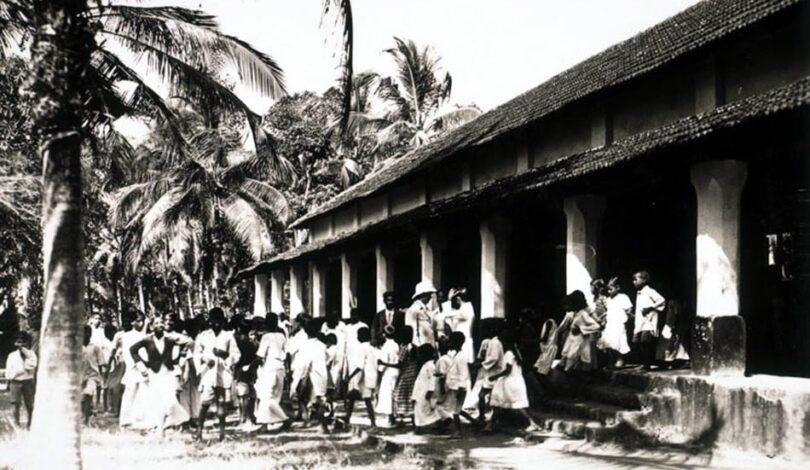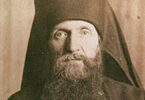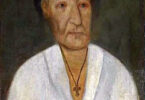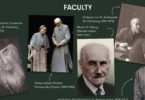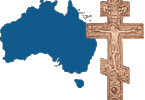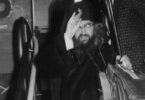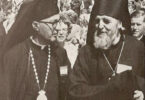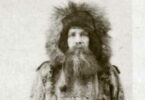During the initial preparations for the research that eventually became Perpetual Embers: A Chronicle of ROCOR’s Missionary Efforts in India, George Alexander, a contact of mine in India, mentioned that he had heard from Bishop Jerome of a Malankara priest joining ROCOR sometime in the past. Having contacted Bishop Jerome, he could only recall the name of the priest as being ‘George Larian,’ a name that, with the exception of the well-known ROCOR priest Father George Larin, brought nothing to light. It was only my visit to the ROCOR archives at the Synod and the opening of the folder pertaining to Archimandrite Lazarus (Moore) [1] Archimandrite Lazarus (Moore) (1902-1992), a ROCOR missionary in India whose life can be read here. that revealed the name of the priest to be George Tharian, thus unlocking a treasure trove of forgotten ROCOR history.
Providentially, at the same time as I was carrying out my own research, Dr. Meledath Kurian Thomas, professor of Church History at Saint Thomas Orthodox Theological Seminary, Nagpur, India, was also conducting his own research into this elusive character. The following article, adapted from a chapter in Perpetual Embers, is the fruit of Dr. Thomas’ research and my own. His own paper, In Search of a Russian: On the Trail of Fr. George, the First Eastern Orthodox from Kerala covers his own research in India and, as-yet, remains unpublished. I am indebted to him for allowing me access to his research, which, as well as providing additional information, revealed a number of facts about Father George that were contradictory to those which he passed on to ROCOR. These contradictions are highlighted in footnotes, when necessary.
The priest George Tharian makes his appearance in ROCOR history in the mid-1960s, just after Archimandrite Lazarus had attempted negotiations with the Malankara Orthodox Syrian Church, having little success. Although Father Lazarus was the first point of contact in ROCOR for Father George Tharian and was involved in the process of bringing him and his movement into the Church, it was Metropolitan Filaret [2] Metropolitan Filaret (Voznesenskii) (1903 – 1985) of New York, third First Hierarch of the Russian Orthodox Church Outside Russia. and Archpriest George Grabbe [3] The future Bishop Gregory (Grabbe) (1902 – 1995) of Washington. that played the central role in trying to steer them into the arms of ROCOR.
Beginning in 1964, a group of clergy and laity from the Jacobite Syriac Church of India [4]The Jacobite Syriac Church of India is an autonomous church under the Syriac Orthodox Patriarchate of Antioch and part of the Oriental Orthodox (monophysite) communion, headed by the Catholicos of … Continue reading, led by Chorepiscop [5]The Indian equivalent to an Archimandrite or Mitred Archpriest. In the Indian church, a chorepiscop can be married or celibate. This lack of a precise equivalent may account for some of the confusion … Continue reading Dr. George Tharian of Thariannagar near Kochincherry in Kerala, began to correspond with Father Lazarus as they sought to enter the Orthodox Church. Father George Tharian declared that this movement had embraced the full faith of the Orthodox Church, including the council of Chalcedon, and had even purified their liturgical texts of references to monophysite saints such as Severos and Dioscoros.
In his first letter to Father Lazarus, Father George Tharian explained that his group, which consisted of six priests and several hundred faithful, had been trying to contact the Greek Orthodox Church from 1961 onwards, with little success. [6] Archive of the Synod, File 22/50, dated 16th November 1964. In fact, their petition to the Ecumenical Patriarchate had met with outright rejection from Patriarch Athenagoras [7] Ecumenical Patriarch Athenagoras I (1886 – 1972) of Constantinople. , who ordered Father George to “cease dividing the Orthodox Syriac Church in Malabar and put an end to the troubles and turmoil which you create in it!” [8]Archive of the Synod, File 22/50, copy of the letter dated 20th July 1960. It is interesting that this letter dates from 1960, while Father George Tharian claimed that he had been in contact with the … Continue reading As the Saint Thomas Christians of Kerala had had long-term links with the non-Chalcedonian Patriarchate of Antioch, the Greek Orthodox Patriarchate of Antioch was the preferred option for their reception into the Orthodox Church [9] Archive of the Synod, File 22/50, dated 16th November 1964. , but, since Father Lazarus was their only point of contact after the Ecumenical Patriarchate’s rejection, Father George Tharian found himself in communication with ROCOR. The group’s title at this time was the ‘Greek Orthodox Church of India,’ although this was to change several times over the following years. Father George Tharian had been directed to Father Lazarus by Father George Theckedath [10]This is most likely Bishop Dr. Mar George Theckedath (1927 – 2012), an episcopus vagans who founded the Nazrani Orthodox Church. There are no documentary records of him ever having converted to … Continue reading, an Indian priest who was allegedly planning to join the Orthodox Church and study at Saint Vladimir’s Orthodox Theological Seminary in the United States. [11] Archive of the Synod, File 22/50, dated 29th October 1964.
Several months later, Father Lazarus reported back to Synod that the “reunion movement” now had around seventy-five priests and thousands of laities. [12] Dr. Thomas states in his article that he believes these figures to be highly inflated, which is most likely to be an accurate summation. Their urgent request was for a metropolitan to be sent to help the church properly establish itself which, according to Father George Tharian, would lead to many supporters of the catholicos party [13]That part of the Saint Thomas Christians who had separated from the Syriac Patriarch of Antioch. Now known as the Malankara Orthodox Syrian Church, it is an autocephalous church of the Oriental … Continue reading joining the endeavor. [14] Archive of the Synod, File 22/50, dated 11th June 1965. It is evident from Father Lazarus’ letters that the Synod’s slow response to the situation was frustrating to him, but once Metropolitan Filaret finally responded to his petitions, the situation began to develop with much speed.
Metropolitan Filaret wrote directly to Father George Tharian, assuring him of his wish to assist to the best of his abilities and those of the Synod. His main questions to the movement regarded their liturgical uses, their calendar, and fasting regulations. He also recommended that Father George Tharian obtain several books, one of which included the canons of the seven ecumenical councils. Regarding the liturgy, as Metropolitan Anastasii [15]Metropolitan Anastasii (Gribanovskii) (1873 – 1965) of Eastern America. Metropolitan Anastasii had shown a keen interest in the Indian mission from the time of Archimandrite Andronik’s initial … Continue reading had already decided that the Indians could maintain their own liturgical rites with whatever doctrinal modifications were necessary, Metropolitan Filaret requested, if possible, an English translation. He also expressed interest in translating the Divine Liturgy of Saint John Chrysostom into Malayalam, so that it could be celebrated on certain days, in order to reinforce the unity of the churches. [16] Archive of the Synod, File 22/50/1112, dated 19th July 1965.
Father George Tharian’s prompt reply to the Synod contained a biography, from which we are able to glean the important details of his life, although, as has been mentioned, the details that he offered to the Synod were not always necessarily consistent with the real situation. He was born in 1924 [17]Dr. Thomas ascertains from his research that he was raised in a prominent Church of South India family before converting to the Jacobite Syriac Orthodox Church in the late 1950s, something which he … Continue reading and studied art and medicine in Bombay before working as a medico. [18]Dr. Thomas states that he was never a medical professional, but instead worked in the advertising industry before becoming involved in the production and promotion of medical equipment. Although … Continue reading He owned a large pharmaceutical plant in Bombay, which he sold in 1955, as well as a hospital and other businesses, and he produced several popular Christian films. Upon giving up the business life and activity in politics, he was ordained to the priesthood by Metropolitan Elias Mar Yulios [19] Metropolitan Elias Mar Yulios (1881 – 1962) was the third patriarchal delegate of the Syriac Orthodox Church of Antioch to Malankara. in 1960 and elevated to the rank of chorepiscop [20] He uses the term ‘archimandrite’ in his letters, which is not used by any Indian church. in 1961, being appointed the Envoy Plenipotentiary of the Holy See of Antioch for the Andaman and Nicobar Islands. [21] Archive of the Synod, File 11/35. Prior to ordination, he had been married with one son, a situation that later caused some problems for him in his attempt to be received into the Church.
On the strength of his biography and several other materials supplied to the Synod, he was officially invited to the Synodal headquarters by the Chancellor, Father George Grabbe [22] Archive of the Synod, File 22/50, dated 24th August 1965. , where he was to spend a month as a guest. At this point, Father George Grabbe took the lead in communicating with his namesake in India and was to show much concern, patience, and optimism over the next three years.
Having arrived in the United States, Father George Tharian was received into ROCOR as an archimandrite by confession of faith and vesting at the Synod Cathedral of Our Lady of the Sign in New York on 2nd January 1966. [23] Archive of the Synod, File 22/50/1959, dated 3rd January 1966. See Appendix I. Two days later, Metropolitan Filaret and Father George Grabbe signed a document announcing the reception of his movement into the Orthodox Church, instituted as the Holy Eastern Orthodox Catholic Church of India [24] According to Dr. Thomas, there is no evidence of this being publicized in India. , with Archimandrite George as administrator and an episcopal see to be filled, pending the election of a metropolitan. [25] Archive of the Synod, File 22/50/1969, dated 5th January 1966. It is not clear from the available documentation how Archimandrite George was to receive the people of his movement into the Church. It is possible that the Synod used a degree of oikonomia, similar to the reception of Saint Alexis Toth and the Uniates into the Orthodox Church.
With the mission now officially under the protection of the Synod, the search began for a bishop to shepherd the newly-received flock. Metropolitan Filaret’s first choice and the obvious candidate was Father Lazarus, but he strongly objected to the notion, due his self-perceived unworthiness of the episcopal rank, in a letter sent to the Synod. [26] Archive of the Synod, File 22/50/, dated 11th April 1966. Also considered for the see was the then-recently ordained priest, Father Dmitri Alexandrov [27] Later Bishop Daniel (Alexandrov) (1930 – 2010) of Erie. , who had a working knowledge of Syriac and was learning Malayalam. [28] This is not mentioned in any documentation but was recounted Bishop Jerome (Shaw) who was close to Bishop Daniel for many years. With the news of Father Lazarus’s rejection, Father George Tharian reached out to Metropolitan Filaret to explain that he himself would be willing to become the Metropolitan of India, after discussions with the people in his movement. [29] Given Dr. Thomas’ research, the ‘people in his movement’ may not be as expansive as it sounds. He stated that he was not fit or worthy, but would be willing to undertake the obedience if the Synod made such a decision. [30] Archive of the Synod, File 22/50, dated 26th April 1966.
The news of Father George Tharian’s reception into the Church as an archimandrite and the search for a bishop was a cause for some concern to Father Lazarus. In a letter to the Synod, he raised the issue that Father George Tharian, who had been a married priest, was still living at the family home with his wife, who had not become a nun. Although the home consisted of two buildings, one for men and one for women, this was common practice in India and should be considered “living together.” Father Lazarus suggested that no one is consecrated bishop for India, but that the Synod should instead send an experienced bishop who could effectively catechise the people and receive them into the Church properly. [31] Archive of the Synod, File 22/50, dated 11th April 1966. The confusion could possibly be attributed to the fact that a chorepiscop can be either married or monastic. It may well be that Father George Tharian, when he referred to himself as an archimandrite, did not know that it was a specifically monastic role.
Around the same time, Father George Tharian had been making contact with the Tolstoy Foundation [32] Archive of the Synod, File 22/50, dated 4th June 1966. in order to secure financial support for the mission, as well as asking Father George Grabbe for donations of literature, vestments, and other necessities. He promised that a monastery, seminary, orphanage, and twenty-five other institutions would be formed by August 1967 if the aid was available. [33]Archive of the Synod, File 22/50, dated 20th July 1966. Although the number of institutions is seemingly large, Father George Tharian had proven business acumen, so such numbers are not beyond … Continue reading The monastery and orphanage were to be located on a newly-purchased coffee plantation at Wynad on the Malabar Coast and named Moran Mar Anasthassi Monastery and Orphanage (Greek Church). [34] Archive of the Synod, File 22/50, Dated 21st July 1966.
In the autumn of 1967, Father George Tharian was officially invited to the diocese of Geneva and Western Europe by Archbishop Antonii (Bartoshevich) [35] Archbishop Antonii (Bartoshevich) (1910 – 1993) of Geneva. , who gave his blessing for Father George to lecture in his parishes. This came after Father George Tharian had returned from seven weeks in Greece and Lebanon, where he encountered Greek Old Calendarist bishops who wanted to consecrate him immediately. [36]Dr. Thomas’ research indicates that he spent time in Greece in the spring of 1965. This could either be a different trip to Greece that he did not mention to the Synod in any of his extant … Continue reading Father George Tharian reported to Father George Grabbe that the Old Calendarists had left a very bad impression on him due to their factionalism and extremism and that he wanted nothing to do with them. [37] Archive of the Synod, File 22/50, dated 29th November 1967.
It was this letter to Father George Grabbe that renewed contact after more than a year of silence, which had left Father George Tharian concerned that he had been disowned by the Synod, a rumor that his enemies in India were spreading. He raised these concerns to Father George Grabbe, as well as asking about the status of Father Lazarus – was he under the new mission, or still directly under the Synod? [38] Ibid. Extant sources show no response to this question. At the same time, Father George Tharian’s former wife, Mary George, wrote a letter to the Synod confirming that she had indeed separated from him at the time of his entry into monasticism and elevation to chorepiscop [39] In her letter, she also uses the term ‘archimandrite.’ and was intending on entering a convent as soon as one was established. [40] Archive of the Synod, File 22/50, dated 29th September 1967. There are no available records in India to corroborate this, so the question of how and when Father George Tharian became a chorepiscop or archimandrite cannot yet be answered.
Contained in the letter to Father George Grabbe was a copy of the resolutions of the third general convention of the reunion movement, now known as the Saint Thomas Eastern Orthodox Church of India, which occurred on the 27th and 28th of August 1967. [41] Archive of the Synod, File 22/50, dated 27th and 28th August 1967. The preamble stated that the group was “an independent, self-governing jurisdiction of the ancient Holy Orthodox Catholic Apostolic Church,” [42] Ibid. although it was still without a bishop. No members of the council were named in the document, with the exception of the secretary, V.D. Arical. The resolutions included accepting the use of the Divine Liturgy of Saint John Chrysostom as an occasional liturgy, as proposed by Metropolitan Filaret; petitioning the Synod to consecrate Father George Tharian as Metropolitan of India; petitioning the Synod to consecrate another metropolitan, who is not Indian, to remain in the United States for fundraising activities; petitioning the Synod to receive permission to enter in dialogue with the “National Church of India” [43] It is not known if they meant the Malankara Orthodox Syrian Church, the Jacobite Syriac Orthodox Church, or the Church of South India. and the Chaldean Syrian Church. [44]The Indian branch of the Assyrian Church of the East (Nestorian). It currently forms the largest archbishopric of the Assyrian Church and is headed by a Metropolitan. Archive of the Synod, File … Continue reading
By the end of the year, Father George Grabbe had responded to Father George Tharian and confirmed that Metropolitan Filaret was happy to present him to the Synod as a candidate for episcopal consecration, provided that he deliver more substantial documentation to the Synod regarding the status of his wife. [45] Archive of the Synod, File 22/50, dated 23rd December 1967. Several months later, Father George Tharian received a decree from the Synod recognizing his divorced status as valid [46] Archive of the Synod, File 22/50/438, dated 20th May 1968. , thus removing the major barrier to his election as bishop. In September of that year, the Synod held a meeting to make a decision on the Indian mission and the vote was in Father George Tharian’s favor to be consecrated as bishop for India. An ukaz was issued stating that there were a total of eleven votes for, two against, and nine absentees. [47] Archive of the Synod, File 22/50/736, dated 24th September 1968. See Appendix II. The bishop-elect was to come to the Synod in New York at an unspecified date to spend two months in preliminary preparations before being consecrated.
It is interesting to note that, of the three bishops that had met Father George Tharian – Metropolitan Filaret, Archbishop Antonii, and Bishop Lavr (Skurla) [48] Metropolitan Lavr (Skurla) (1928 – 2008) of Eastern America. – one, Archbishop Antonii, voted against. The other vote against him came from Archbishop Antonii (Medvedev) of San Francisco [49] Archbishop Antonii (Medvedev) (1908 – 2000) of San Francisco. , who advised against such a move in the wake of Kovalevsky [50]Bishop Jean-Nectaire (Kovalevsky) (1905 – 1970) of Saint-Denis. A former priest of the Moscow Patriarchate, he was consecrated a bishop by Saint John (Maximovitch) in 1966 and installed as the … Continue reading and the ECOF [51]Eglise Catholique Orthodoxe de France (ECOF), now known as Eglise Orthodox de France, is an independent Western Rite Orthodox movement in France. Received into canonical Orthodoxy in the 1960s by … Continue reading schism.
This vote went ahead despite the letter received from Father Lazarus in the summer, in which he stated his opposition to the consecration of Father George Tharian as a bishop. He wrote that, despite Father George Tharian being a good and friendly man, he did not deem him suitable for the episcopacy due to several factors, notably his lack of theological education and knowledge of the Holy Scriptures, and his lack of spiritual knowledge and ability to lead people in the spiritual life. He also mentioned that an unnamed Greek bishop had contacted him and asked whether or not it was wise to consecrate Father George Tharian as a bishop. [52] Archive of the Synod, File 22/50, dated 21st June 1968.
Ultimately, Father Lazarus’ view won out, as, not long after Father George Tharian became bishop-elect for India, the plans were abruptly canceled, although not as a direct result of Father Lazarus’s letter.
The Synod had received a copy of one of Father George Tharian’s books, Maitbuna Buthikal, which contained images and content deemed inappropriate for a clergyman and medical doctor. Father George Grabbe informed him that it was decided since the book had been sent by someone hostile to him, that it would be in the best interests of the church to cancel his consecration, as it would make the church vulnerable to its enemies. [53] Archive of the Synod, File 22/50/1152, dated 27th January 1969. It is possible that there is more to this than simply what was stated in the letter to Father George Tharian and, while there is nothing to suggest this from the extant documents, it could be that the nature of his medical work – family planning and contraception – played a role in the Synod’s decision to cancel the consecration.
There is no more extant correspondence after this, so it is apparent that Father George Tharian ceased contact with ROCOR around this time. Nothing more is known of his activities after this point other than his death in 1974, at the age of fifty, so the Saint Thomas Eastern Orthodox Church of India most likely died with him. What is known is that he never renounced the Orthodox faith, although he was given a Church of South India burial at the CSI parish of Punnakkadu, due to the absence of Orthodox clergy to bury him. [54] Thomas, In Search of a Russian. So, we can only assume that he lived and died his last few years as a clergyman of ROCOR, although he did not maintain contact with the Synod.
Father George Tharian is a fascinating case, as many of his activities are highly suggestive of the behavior associated with vagantism: regular name changes for his movement, elaborate promises to open institutions such as seminaries and monasteries, uncorroborated stories of large numbers of followers, requests for money and supplies, requests for autonomy, and indirect requests to be consecrated bishop.
At the same time, however, from his correspondence, it is clear that he turned downed opportunities to be consecrated by Greek Old Calendarist bishops [55] If, of course, this story is true. Given the history of illicit and irregular consecrations in the Old Calendarist movement, it is highly probable that Father George Tharian is being truthful. , never received consecration from anyone after his estrangement from ROCOR or even joined another Orthodox body, and was fairly modest in his financial requests, so the case for him being genuine in his wish to be united to the Orthodox Church is strong. Father Lazarus, who met him in person and spent time in South India with his community, was also very keen on receiving him into the Church and showed genuine optimism and enthusiasm for the movement.
Although Father George Tharian shares many traits with episcopi vagantes and was misleading in many of his statements to the Synod, the fact that he remained loyal to Orthodoxy and never sought consecration at the hands of an independent bishop after his rejection by the Synod is in his favor. Since he was never formally deposed or excommunicated by the Church, we should remember the servant of God Archimandrite George in our prayers.
The final judgment on Father George Tharian comes from his own diary: “many know me but nobody knew me,” [56] Ibid. an enigmatic statement if there ever was one.
Appendix I
The Office for the reception of Archimandrite George (Tharian) into the communion of the Orthodox Church
Archimandrite George is brought before the Metropolitan and bows to him.
Metropolitan: Dost thou desire to enter and abide in the communion of the Holy Orthodox-Catholic Faith?
Fr. George: I desire it with all my heart.
Metropolitan: Dost thou believe in one God, who is adored in the Holy Trinity, the Father, the Son, and the Holy Spirit; and dost thou worship him as the King and God?
Fr. George: I believe in one God who is glorified and adored in the Trinity, The Father, the Son, and the Holy Spirit; and I worship Him as my King and God.
(Low reverence to the East)
Fr. George: I believe in one God the Father Almighty, Maker of heaven and earth, and of all things visible and invisible.
And in one Lord Jesus Christ, the only-begotten Son of God, Begotten of his Father before all worlds; Light of Light, Very God of very God. Begotten, not made; Being of one Essence with the Father; By whom all things were made; Who, for us men, and for our salvation, came down from heaven, and was incarnate by the Holy Spirit of the Virgin Mary, and was made man; and was Crucified also for us under Pontius Pilate, and suffered and was buried. And the third day He rose again according to the Scriptures. And ascended into heaven, and sitteth on the right hand of the Father. And He shall come again with glory to judge both the quick and the dead; Whose kingdom shall have no end.
And in the Holy Spirit, the Lord and Giver of Life, Who proceedeth from the Father, Who with the Father and the Son together is worshipped and glorified, Who spake by the Prophets. In one Holy Catholic and Apostolic Church. I acknowledge one Baptism for the remission of sins. And I look for the Resurrection of the dead, and the Life of the world to come. Amen.
Metropolitan: Blessed is God, who enlighteneth every man that comes into the world. Tell us of the other dogmas of our Orthodox Church, its traditions and ordinances; how thou holdest concerning them?
Fr. George: In the name of the Father, and the Son, and the Holy Spirit. I. the humble Archimandrite George, ask the Holy Catholic Orthodox Church for the love of God to accept me into communion as one of its faithful sons.
We accept its catholic doctrines and promise obedience to the Orthodox Church. Renouncing every erroneous belief we anathematise all heresies which were anathematised by the Holy Seven Ecumenical Councils and particularly by those of them which were previously unknown to us, and we accept those Councils;
The fourth Ecumenical Council assembled in Chalcedon in the time of Markian, which Council renounced the doctrines of Dioscorus and Euthichios that in Our Lord Jesus Christ there is one nature in unity.
The fifth Council, also the second of Constantinople, assembled in the time of Justinian and which Council anathematised Theodore and his doctrines.
The sixth Council, also the third of Constantinople, assembled in the time of Constantine and which taught that in Christ our Lord there are two natures and two natural actions and two natural wills. But those two wills are not in contradiction to each other; but his human will do not counteract his Divine will, but one the contrary was in harmony with it and obeyed it.
The seventh Council, also the second of Nicaea, assembled in the time of Constantine and Irina which has taught to properly honor and reverence the holy Icons, namely holy images and which has anathematised those who have cast aspersion on the Holy Church saying that allegedly it worships the holy icons as pagans worship their idols. However, we, the sons of the Church, honor them not to idolatry as it befits the creature to worship his creator, but only honor them in the same way as we honor the Cross of Christ and the Holy Gospel.
We accept and confess the Apostolic and Ecclesiastical Canons, established at the Seven Holy Ecumenical and Provincial Councils, and the other traditions of the Holy Orthodox-Catholic Apostolic Church of the East, its rules and ordinances; and we likewise will accept and understand Holy Scripture in accordance with the interpretation which the Holy Orthodox Catholic Church of the East, our Mother, hath held and doth hold.
We also promise to be in communion only with those with whom the Holy Russian Orthodox Church Outside of Russia has communion. And all those whom it regards as deprived of communion we will regard as deprived of communion.
I make this statement before Your Eminence and the assembled clergy in concord with other clergymen and faithful of the Church in India.
We believe that the Great High Priest Our Lord Jesus Christ is blessing this our endeavor. And in confirmation of this my true and sincere profession of faith, I now kiss the word and cross of my Saviour. Amen.
Metropolitan: (after Fr. George has kissed the Holy Gospel and Cross); Blessed is God who willeth that all men should be saved, and should come unto the knowledge of the truth; Blessed is he forever. Amen.
Then he saith to Fr. George:
Bow thy knees before the Lord God, whom thou hast confessed, and receive remission of the sins.
And while Fr. George kneels: Our Lord and God Jesus Christ committed unto his Apostles the key of the Kingdom of heaven and bestowed upon them full power through his grace both to bind and to lose a man from his sins upon the earth. May the same, through his unspeakable mercy, pardon thee. And I by his almighty power, given unto me, an unworthy Bishop, through his holy Apostles and their successors do pardon and absolve thee, my child, Archimandrite George, from all thy sins; and do unite thee unto the fellowship of the faithful, and unto the body of Christ’s Church; and do communicate thee with the Divine Sacraments of the Church; in the Name of the Father, and the Son, and the Holy Spirit. Amen.
Then the Metropolitan sayeth unto Fr. George:
Rise, brother, and as a faithful servant of Jesus Christ pray thou unto him with us, that he will vouchsafe unto thee to receive the grace of the Holy Spirit.
(Archimandrite George then enters the altar, puts on vestments and further takes part in the Liturgy.)
Appendix II
Results of the Vote for Electing Archimandrite George (Tharian) as Bishop
For:
Metropolitan Filaret of New York and Eastern America
Archbishop Aleksandr of Berlin and Germany
Archbishop Nikon of Washington D.C. and Florida
Archbishop Savva of Sydney and Australia
Archbishop Serafim of Chicago and Detroit
Archbishop Filofei of Hamburg and North Germany
Archbishop Vitalii of Montreal and Canada
Bishop Pavel of Stuttgart
Bishop Andrei of Rockland
Bishop Lavr of Manhattan
Bishop Nikandr of Sao Paulo and Brazil
Against:
Archbishop Antonii of Geneva and Western Europe
Archbishop Antonii of San Francisco and Western America
Absent:
Archbishop Afanasii of Buenos Aires and Argentina
Archbishop Leontii of Chile and Peru
Archbishop Antonii of Los Angeles
Archbishop Averkii of Syracuse
Bishop Savva of Edmonton
Bishop Nektarii of Seattle
Bishop Seraphim of Caracas and Venezuela
Bishop Nikodim of Richmond and Great Britain
Bishop Konstantin of Brisbane
LINKS
Nicolas Mabin, Russian Exiles and the Indian Orthodox Church (1931 -1939)
References
| ↵1 | Archimandrite Lazarus (Moore) (1902-1992), a ROCOR missionary in India whose life can be read here. |
|---|---|
| ↵2 | Metropolitan Filaret (Voznesenskii) (1903 – 1985) of New York, third First Hierarch of the Russian Orthodox Church Outside Russia. |
| ↵3 | The future Bishop Gregory (Grabbe) (1902 – 1995) of Washington. |
| ↵4 | The Jacobite Syriac Church of India is an autonomous church under the Syriac Orthodox Patriarchate of Antioch and part of the Oriental Orthodox (monophysite) communion, headed by the Catholicos of India. |
| ↵5 | The Indian equivalent to an Archimandrite or Mitred Archpriest. In the Indian church, a chorepiscop can be married or celibate. This lack of a precise equivalent may account for some of the confusion regarding Father George’s marital status and his later claims to being a monk. |
| ↵6 | Archive of the Synod, File 22/50, dated 16th November 1964. |
| ↵7 | Ecumenical Patriarch Athenagoras I (1886 – 1972) of Constantinople. |
| ↵8 | Archive of the Synod, File 22/50, copy of the letter dated 20th July 1960. It is interesting that this letter dates from 1960, while Father George Tharian claimed that he had been in contact with the Greek Orthodox Church only since 1961. He is also referred to as an archimandrite in the letter, although he did not receive his elevation to that rank until 1961. |
| ↵9 | Archive of the Synod, File 22/50, dated 16th November 1964. |
| ↵10 | This is most likely Bishop Dr. Mar George Theckedath (1927 – 2012), an episcopus vagans who founded the Nazrani Orthodox Church. There are no documentary records of him ever having converted to Orthodoxy or having studied at Saint Vladimir’s Seminary. |
| ↵11 | Archive of the Synod, File 22/50, dated 29th October 1964. |
| ↵12 | Dr. Thomas states in his article that he believes these figures to be highly inflated, which is most likely to be an accurate summation. |
| ↵13 | That part of the Saint Thomas Christians who had separated from the Syriac Patriarch of Antioch. Now known as the Malankara Orthodox Syrian Church, it is an autocephalous church of the Oriental Orthodox (monophysite) communion, headed by the Catholicos of the East. |
| ↵14 | Archive of the Synod, File 22/50, dated 11th June 1965. |
| ↵15 | Metropolitan Anastasii (Gribanovskii) (1873 – 1965) of Eastern America. Metropolitan Anastasii had shown a keen interest in the Indian mission from the time of Archimandrite Andronik’s initial work in Kerala. |
| ↵16 | Archive of the Synod, File 22/50/1112, dated 19th July 1965. |
| ↵17 | Dr. Thomas ascertains from his research that he was raised in a prominent Church of South India family before converting to the Jacobite Syriac Orthodox Church in the late 1950s, something which he never mentions to the Synod. |
| ↵18 | Dr. Thomas states that he was never a medical professional, but instead worked in the advertising industry before becoming involved in the production and promotion of medical equipment. Although everything Fr. George wrote to the Synod about his work in the medical field is true, he never actually qualified as a medical doctor. Most of his medical work was conducted under the auspices of the Family Planning Association of India and the International Planned Parenthood Federation, something that would raise questions later. |
| ↵19 | Metropolitan Elias Mar Yulios (1881 – 1962) was the third patriarchal delegate of the Syriac Orthodox Church of Antioch to Malankara. |
| ↵20 | He uses the term ‘archimandrite’ in his letters, which is not used by any Indian church. |
| ↵21 | Archive of the Synod, File 11/35. |
| ↵22 | Archive of the Synod, File 22/50, dated 24th August 1965. |
| ↵23 | Archive of the Synod, File 22/50/1959, dated 3rd January 1966. See Appendix I. |
| ↵24 | According to Dr. Thomas, there is no evidence of this being publicized in India. |
| ↵25 | Archive of the Synod, File 22/50/1969, dated 5th January 1966. |
| ↵26 | Archive of the Synod, File 22/50/, dated 11th April 1966. |
| ↵27 | Later Bishop Daniel (Alexandrov) (1930 – 2010) of Erie. |
| ↵28 | This is not mentioned in any documentation but was recounted Bishop Jerome (Shaw) who was close to Bishop Daniel for many years. |
| ↵29 | Given Dr. Thomas’ research, the ‘people in his movement’ may not be as expansive as it sounds. |
| ↵30 | Archive of the Synod, File 22/50, dated 26th April 1966. |
| ↵31 | Archive of the Synod, File 22/50, dated 11th April 1966. |
| ↵32 | Archive of the Synod, File 22/50, dated 4th June 1966. |
| ↵33 | Archive of the Synod, File 22/50, dated 20th July 1966. Although the number of institutions is seemingly large, Father George Tharian had proven business acumen, so such numbers are not beyond possibility. |
| ↵34 | Archive of the Synod, File 22/50, Dated 21st July 1966. |
| ↵35 | Archbishop Antonii (Bartoshevich) (1910 – 1993) of Geneva. |
| ↵36 | Dr. Thomas’ research indicates that he spent time in Greece in the spring of 1965. This could either be a different trip to Greece that he did not mention to the Synod in any of his extant communications, or a simple mistake in the date. There are no extant sources that have any information about his activities in Lebanon. |
| ↵37 | Archive of the Synod, File 22/50, dated 29th November 1967. |
| ↵38 | Ibid. Extant sources show no response to this question. |
| ↵39 | In her letter, she also uses the term ‘archimandrite.’ |
| ↵40 | Archive of the Synod, File 22/50, dated 29th September 1967. |
| ↵41 | Archive of the Synod, File 22/50, dated 27th and 28th August 1967. |
| ↵42 | Ibid. |
| ↵43 | It is not known if they meant the Malankara Orthodox Syrian Church, the Jacobite Syriac Orthodox Church, or the Church of South India. |
| ↵44 | The Indian branch of the Assyrian Church of the East (Nestorian). It currently forms the largest archbishopric of the Assyrian Church and is headed by a Metropolitan. Archive of the Synod, File 22/50, dated 27th and 28th August 1967. |
| ↵45 | Archive of the Synod, File 22/50, dated 23rd December 1967. |
| ↵46 | Archive of the Synod, File 22/50/438, dated 20th May 1968. |
| ↵47 | Archive of the Synod, File 22/50/736, dated 24th September 1968. See Appendix II. |
| ↵48 | Metropolitan Lavr (Skurla) (1928 – 2008) of Eastern America. |
| ↵49 | Archbishop Antonii (Medvedev) (1908 – 2000) of San Francisco. |
| ↵50 | Bishop Jean-Nectaire (Kovalevsky) (1905 – 1970) of Saint-Denis. A former priest of the Moscow Patriarchate, he was consecrated a bishop by Saint John (Maximovitch) in 1966 and installed as the first hierarch of the Eglise Catholique Orthodoxe de France (ECOF). After a dispute with the Synod, he broke away from ROCOR. |
| ↵51 | Eglise Catholique Orthodoxe de France (ECOF), now known as Eglise Orthodox de France, is an independent Western Rite Orthodox movement in France. Received into canonical Orthodoxy in the 1960s by ROCOR, it later joined the Patriarchate of Romania before going independent. |
| ↵52 | Archive of the Synod, File 22/50, dated 21st June 1968. |
| ↵53 | Archive of the Synod, File 22/50/1152, dated 27th January 1969. |
| ↵54 | Thomas, In Search of a Russian. |
| ↵55 | If, of course, this story is true. Given the history of illicit and irregular consecrations in the Old Calendarist movement, it is highly probable that Father George Tharian is being truthful. |
| ↵56 | Ibid. |

